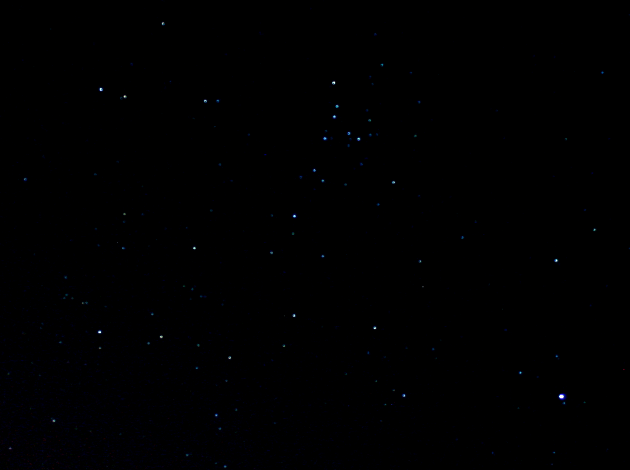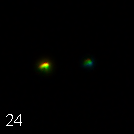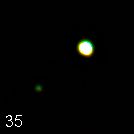

This is the only constellation named after a real person. Berenice was the wife of King Ptolemy III Euergetes (246 - 222 BC) of Egypt. In 243 BC, he undertook a dangerous expedition against the Seleucid Empire (an empire that maintained Greek culture) whose people had killed his sister. His young bride, Berenice, vowed that if he returned safely she would give all her long, blonde hair to Aphrodite. When he did, she kept her promise and had her head shaved and the hair placed in Aphrodite's temple. By the next day it had vanished and the court astronomer explained that Aphrodite had been so pleased with the gift that she had placed it among the stars.
Queen Berenice died in 221 BC, the year after her husband.

|
Coma Berenices is not an original Ptolemaic constellation. Its creation is usually credited to Tycho Brahe who included it in his catalogue published in 1602, but it was included on a globe made by Caspar Vopel in 1536 so appears to predate Tycho by at least 60 years. The constellation is a faint one, difficult to make out in modern light-polluted skies (presumably they were darker in Egypt in the third century BC). The brightest star (β) is only of magnitude 4.2. The brightest star in the area is Denebola (β-Leonis) so I have included that in my picture. However the constellation contains the galactic north pole (close to 31) so is well away from the Milky Way. It is rich in galaxies and almost half of the Virgo cluster is actually in this constellation. It contains eight Messier objects which don't show in my picture but I have tried to indicate their approximate positions. M53 is a globular cluster and not a difficult object but the galaxies are all rather faint. In addition 41 and β act as pointers to M3 which is in the nearby Canes Venatici and just outside the top, left-hand edge of my picture. |
There are four multiple stars of note. Diadem (α) consists of two almost equal stars orbiting in 25.87 years. The orbital plane is inclined by about 0.1° but it is thought that eclipses do not occur. 17 has a white primary and soft blue secondary separated by 143 arc-seconds. 24 is a double star with an orange primary and green secondary separated by 20 arc-seconds. 35 is a quadruple star; the primary is a spectroscopic binary orbited by a companion at a distance of 1 arc-second. 29 arc-seconds from the primary is another star with the same proper motion as the primary and therefore assumed to be associated with it despite its large separation. All the pictures below were taken at prime focus of my LX200 with a DFK 21AF04 camera.



The main picture is a part of a picture of the area taken at 22:46 UT on 3 April 2011 with my Canon 1000D DSLR camera with an 18-mm, f/4 lens, and 30-second exposure at ISO 1600. The light pollution was removed by a colour adjustment in PhotoImpact and it was reduced in size followed by a slight unsharp mask to compensate for loss in the reduction.